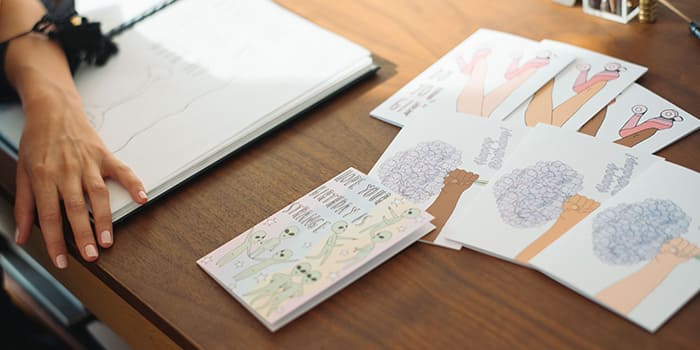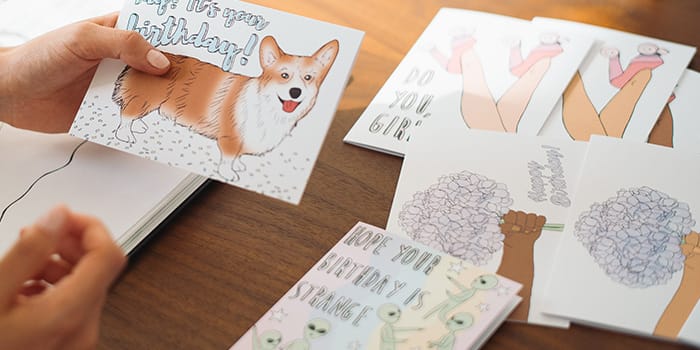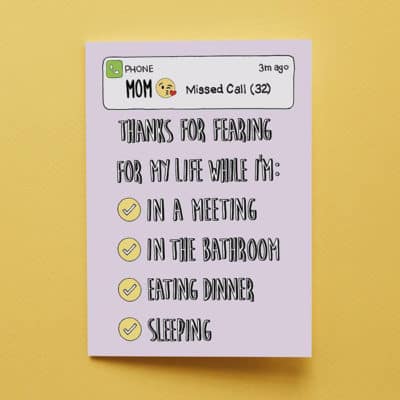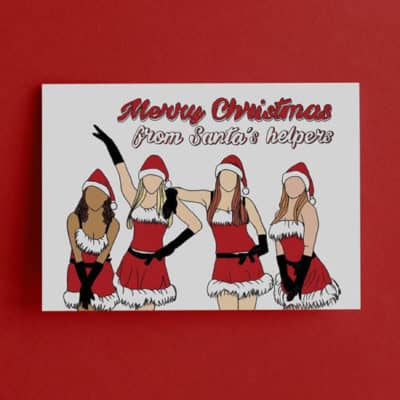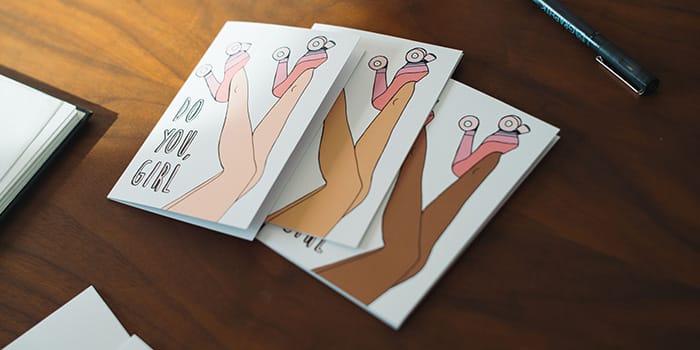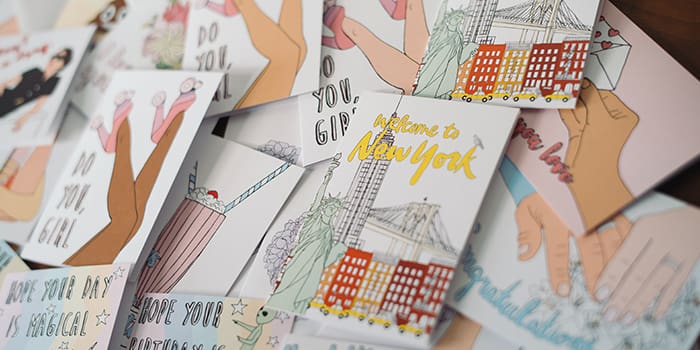From zero to hero: staying true to your values as you grow
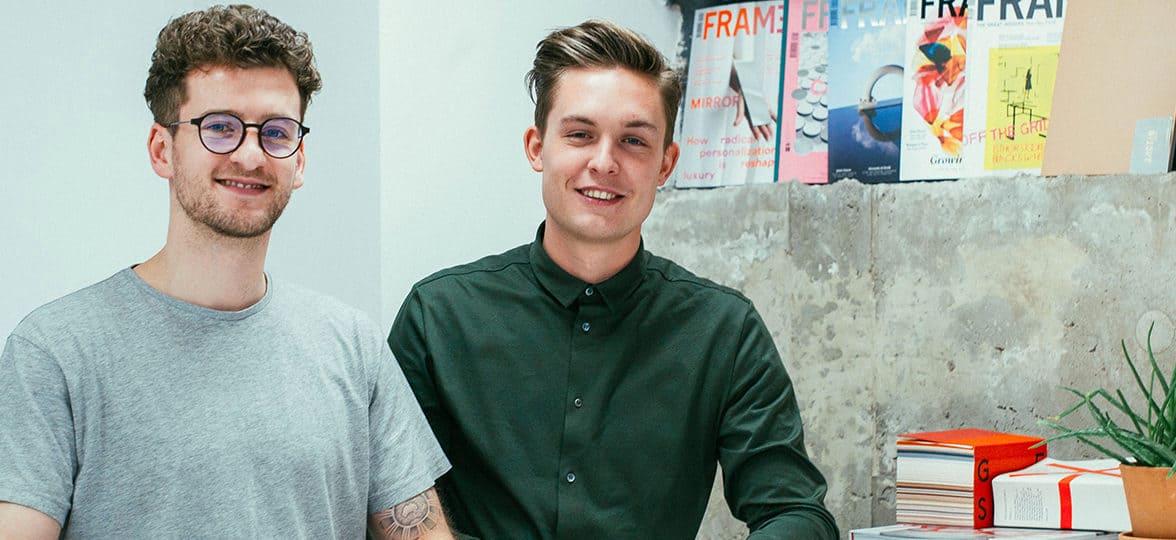
We met UTH Studio – an interior design company based in Manchester to talk branding and how they’re keeping hold of that small business feeling as they grow.
UTH was founded in 2016 by Liam and Olly. They focus on interior and product design commissions with the belief that young minds are the most exciting, free from the old school mentality. And, they stand by their mission statement – that they’d never design something they wouldn’t live, play or work in themselves.

Liam and Olly originate from the same background in Interior Design at the Manchester School of Art. This is where their talent for conceptual thinking, design and detail was born, forming their studio culture.
Since setting up their studio, they’ve grown at a fast rate, taking on commissions from all over the globe. So, how are they managing to stay grounded, retaining their small business feeling and what are their tips for other like minded entrepreneurs?
Tell us a little bit about UTH Studio
Olly: UTH is an interior design studio based in Manchester. Liam and I started the company in 2016 – we wanted to change the way design is viewed in the North West.
Liam: We felt like Manchester was lagging a little behind places like London in terms of exciting design, and we saw an opportunity to try and reignite that.

How did you build the branding behind UTH, putting yourself out there for the world to see?
Olly: Step by step, it was a trial and error thing. We reviewed and revised our branding quite a few times. We asked ourselves, ‘who are we and what do we do?’. We wanted to express ourselves and our company through our branding.
Liam: Graphically, it’s inspired by our love of Scandinavian design. It’s clean and simple which allows us to evolve and adapt.
In your own words, you’ve gone from zero to hero in a matter of months, how are you planning on keeping hold of the small business feeling as you grow, and what things are important for you to preserve?
Liam: We centre ourselves around great design, its potential and what it can offer – we want to keep our brand fresh. We’ll continue to bring like-minded people on board – people who have a similar way of thinking and approach to design as we do.
Olly: Quality management is hugely important to us. We don’t want to grow too fast, too quickly. We want to maintain a pace that allows us to consistently produce work to a standard that we’re proud of.
How do UTH use brand to beat off the competition and stand out from the crowd? And, how do you use MOO products to support you with that?
Liam: We’re dealing with some pretty big competition, but we like to keep things simple. We appreciate that we’re still establishing our company so we like to keep our pitches toned back and let our work do the talking for us. Our business cards are single tone colours on the front, with our UV spot gloss logo allowing us to show how subtle, yet beautiful, design can be – we feel this reflects us well.
Olly: Our business cards are going to be constantly evolving. As trends change we plan on switching out colours and tones and with the Printfinity option from MOO.
What are your tips for aspiring entrepreneurs wanting to start out in a similar field to you?
Liam: We decided to break the mould a little – we didn’t want to come out of university and work our way up the ladder in the hope that we would eventually start designing. We love what we do, and didn’t want to have to wait for our big break. We followed our passions and decided to go it alone – so far so good!
What are you guys working on that you’re excited about?
Olly: We’re working on a number of projects from Manchester to the Middle East. We’ve recently won a huge project in the centre of Manchester which includes bars, restaurants and apartments. It’s really exciting – the brief just keeps on growing. It’s just won “Project win of the year” as well, so it was a big achievement and we’re made up!
Liam: We’ve got a work space in Liverpool, as well as a furniture studio in Manchester that we’ve designed. Within our first year, we’re hoping that our jobs in the Middle East will be finished so that we can have a really strong portfolio going into our second year in business.
Ready to brand your business? Create your own Spot Gloss Business Cards
Here at MOO, we believe that people are the most important part of our business. Sure, marketing and product rank high on the list of importance—but where would we be today without our amazing MOOcrew? And we’re not the only ones who feel this way. That’s why there is an entire industry devoted to matching the right people to the right jobs at the right companies.
But not all recruitment companies are quite like Y Scouts—a purpose-driven executive search firm based in Scottsdale, Arizona. The company aims to disrupt the talent recruitment industry by focusing on the passion and core values of companies and new hires. MOO spoke to the company’s Chief Brand Architect, Candi Luciano, about the company’s mission and the unique ways it recruits the perfect candidates for the position.
How does Y Scouts differentiate itself from other talent search companies?
There are 3 aspects of our model that differentiate us from our competition. First, we are a learning-based firm. We pride ourselves on asking better questions and digging into the most nuanced details of our clients and the leadership roles they need filled. We don’t rely on a band of usual suspects that we can move from client to client every few years.
Second, we approach our targeted list of high potential leadership candidates in a covert way. We don’t reveal the identity of our client or the details of the leadership role during our initial discovery process. The focus is solely on the person behind the resume so we can uncover what matters most to them. If their purpose and values feel aligned to our client, we’ll lift the curtain and share all the details.
The third differentiator is our Leadership Model. This is comprised of 3 traits our clients demand from leaders; driving results, developing people, and learning relentlessly. We look for specific, measurable proof points of these 3 traits or behaviors from every leader we speak to. It’s worth noting that we don’t incentivize our search directors to close transactions. We’re big on the concept of alignment, and everything we do is aligned to achieve the best possible outcome for everyone involved.
How do you define purpose-driven?
We want to find out what really matters to you by asking different types of questions in the interview process. We believe that while skills are important, we try and find out what someone is passionate about, so that we can find out what truly matters to them. That way, we can better connect them to the type of work that will be meaningful to them every day in their role.
“We try and spark the conversation because we believe that behind every resume is a human being.”
What types of questions do you ask when you are trying to find out someone’s passion?
We have thousands of questions, and we are constantly innovating on what the best ones are to ask. We ask everything from, “What is the difference you strive to make in the world?” to “If you were going to teach a college course, what course would you teach?” The answers to these questions really help us match the right candidate to the right company.
What was your experience being recruited by Y Scouts as an employee?
I actually knew the CEO of Y Scouts for over twenty years. One day, I met up with him for coffee and we had a great conversation. Afterwards, I realized that he was doing a covert discovery process on me and I didn’t even know it. He learned about what mattered to me and knew there was a position open at Y Scouts. That’s actually how I ended up with my job!
It’s amazing when you are in the right company culture and people are so aligned and connected—you become more energized than you’ve ever felt at a job. You end up wanting to serve the company as much as possible because you care so much about the people you work with.
How does MOO help drive your initiatives and results?
One of our core values is gratitude. We write thank-you notes to candidates during the interview process, but also congratulations letters when they accept a position and connected to a role that matters. We always write to wish them well on the new and exciting journey.
We combine them with our MOO Business Cards, which we created using Printfinity. On the backs of the cards, there are multiple photos of our team because our process is so human. We wanted to give them the opportunity to get to know us in the process as well. We try and spark the conversation because we believe that behind every resume is a human being. We want people to know about our stories as much as we are digging into theirs. MOO has really allowed that to happen.
Are you a business looking to elevate your brand? Click here to find out more about MOO Business Services.
As your business grows and the workload grows with it, it’s important to make sure that your employees are engaged. Employee engagement might sound like a fluff feel-good metric — but focusing on engagement often results in a strong ROI and increased productivity, which is always a good thing as a business owner. Here are four ways to get (and keep) your employees happy and engaged.
Keep your employees informed
Everyone loves surprises…except when they don’t. Even though practicing transparency can be difficult, it can help your employees trust you more. That trust, in turn, can lead to higher engagement. In a recent Quantum Workplace report, the most important factors for happiness and engagement were trust in the leaders and senior management of the company. And a survey from TINYpulse found that transparency was the #1 factor in employee engagement.
Be upfront with your employees, even when it’s bad news. Nobody wants to hear about a project failing (or impending layoffs) through the rumor mill instead of from their boss.
You should also be clear with employees about more positive aspects. Share rewards or incentives for achieving specific metrics, or what the career development paths are in your company. Employees like to know what kind of results they can get from putting in the work. This makes them more likely to want to do that work.
Create a strong culture
That same TINYpulse survey also found that only 42% of employees know their company’s vision, mission, and cultural values. That’s a big missed opportunity — having a shared company culture and vision can help unite and engage employees. Make sure that your brand manifesto, goals, and values are easy to remember and something that your employees will actually want to get behind.
When creating these goals and values, try to focus on the end result of your brand or company. In copywriting terms, you want to frame them around benefits, not features. Instead of looking for the best cakes in the area (yum), you can focus on how your food brings employees and teams together during good times.
And make sure that your company values are actually carried out in the day to day work. If your company values empowerment, but your actual policies teeter on micromanagement, there’s a disconnect there — and your employees will be able to tell.
Let people have a stake
It’s hard for employees to feel like their input matters when decisions are passed down from on-high. Make sure that you’re involving your employees in major decisions that will affect the product, the team, and their workload. There are a few ways to implement this. You can have regularly scheduled (biweekly or monthly) 1:1 meetings with their team lead where they can offer and receive feedback. Even anonymous feedback submitted to management via surveys or email will help engagement.
Research shows that employees that have a stake in their physical environment are more engaged, too. Gallup found that employees who have a personal workspace are 1.4 times more likely to be engaged at work. Employees who are allowed to move around to different areas at work are 1.3 times more likely to be engaged. The best balance of the two might be an open office workspace with common areas, where each employee also has a designated area that they can control the look and feel of.
Always offer (and share) recognition
Last, but not least, make sure that all of your employees receive recognition when they’ve done their job well. And that it isn’t just heaped upon their team lead or 1-2 star players. Getting recognized (whether it’s in the company Slack channel, or even in their biweekly one-on-one) for their hard work will make them feel more invested and motivated to stay at it.
How does your company boost employee engagement? We’d love to hear in the comments below!
Find out how Marianna Peragallo, owner of Hand Plus Heart turned her hobby for creating greeting cards into a thriving online shop.
Marianna Peragallo is the fabulous artist behind greeting card company, Hand Plus Heart. Based in New York City, Marianna’s passion for designing cards started when she was back in high school where she would create a card for every occasion. Here, she tells us how she turned her hobby into a thriving online shop and shares the stories behind some of her favorite designs.
Tell us about your business – and where did the name come from?
It all started when I began making personalized cards for friends and family in high school. Hand Plus Heart has since grown into an online shop ranging a collection of cards with heartfelt, quirky messages (and the occasional pop culture reference) for all loved ones. Most cards are available in a variety of skin tones – I wanted them to feel customizable, inclusive, and progressive.
When I began deliberating a name for my shop, I thought about my subject matter and process – my drawings are mostly of hands doing something (holding flowers, holding wine bottles, holding another hand, etc.). And my designs are hand drawn, usually made with specific people in mind, so the cards come from a place of love. The name Hand Plus Heart popped into my head one day and I ran with it.
How did you come to find yourself designing greeting cards?
I’ve been making cards for people since I was a kid. When I was in high school my friends nicknamed me ‘Mashbomb Hallmark’ because my name would get autocorrected to Mashbomb in texts and I made cards for every occasion – I probably should have named my store Mashbomb!
I started developing the style of Hand Plus Heart in early 2016. This coincided with another drawing project I was working on called ‘The Remembrance Archive’ – it was a really heavy project. I’m a visual artist with a focus on drawing, but I also work on fine art projects that have a very different aesthetic to Hand Plus Heart. Making the cards was a fun outlet that gave me the space to reflect on moments that bring people joy. By October 2016, I had a solid range of cards and decided to put a website together that I could use as a commercial portfolio and web shop – separate to my artist’s website.
What were you doing before you set up your business and where did the drive and ambition to start your own business come from?
I used to work as a studio manager for another artist – I left as I decided wanted to give more time to my own work. Hand Plus Heart is just one of my many projects – the web shop seemed like a natural next step once I’d realized just how big my range was. To be honest, I’m the least business-minded person ever, but I love launching new projects and sharing them with people. Opening my web shop was just that!
I’m driven to make artwork that resonates with people, touching lives in some way. Creating brings me pleasure and satisfaction – but the prospect of not making things also gives me a deep anxiety, propelling me to constantly create. That’s probably my least healthy drive, but it’s very real.
Some of your cards have a really specific story behind them – your Missed Calls From Mom card is brilliant and something everyone can relate to. Do you draw inspiration from your own experiences?
Yes, most of my cards are inspired by my life and the lives of my friends and family. I’ll often include a little story when I post new cards to the Hand Plus Heart Instagram account. The Missed Calls From Mom card is a personal favorite that I made for Mother’s Day. I haven’t had a slew of missed calls from my mom in a while, but my brother still experiences it from time to time.
It’s so funny – when I call back she’s like “WHERE WERE YOU!?” And I want to be like, “I was dying! Thank god you called a million times! That’s what got me through and now I’m calling you back!” Instead I’m like, “Sorry…I was making myself dinner”. My mom and I are really great friends and talk often, so I feel ok about teasing her a bit.
Your illustrations feature a lot of meme references and internet culture – what do you love about this and do you find yourself creating the message or illustration first?
I usually have a specific occasion or person in mind, and I’ll jot down ideas as they come. The message and drawing usually come together. Sometimes I’ll use reference images from memes – as you can see on the Rizzo Valentine’s Day card and Mean Girls Christmas card. I use emoji’s recklessly and without shame in my text conversations, so it was only a matter of time before they made an appearance on my cards. With that said, I am usually the last to know about new memes and internet trends. The images and text I choose are more of a reflection of my sensibility and humor than an interest in internet culture.
What’s your favorite design and why?
One of my favorite cards has a drawing of Rizzo from the movie Grease lounging on a bench saying “Valentines Day? Sounds like a drag.” I watched Grease every weekend when I was a kid and I’ve always loved Rizzo. It was designed as a Valentine’s Day card to myself – even though I enjoy the (fake) holiday.
What’s the reaction to your cards? Do you have a story of a time one of your cards has really saved the day, made a difference or built a connection?
I’ve received really sweet responses to my cards. Friends and family are especially touched when they can tell the card was made with them in mind. The option to customize the skin tone has been really positive too. A friend of mine told me that she never saw herself represented in greeting cards before, so she was really moved that she could buy her mother a card that truly felt like it was coming from her.
How do you promote your brand? Do you use social media to build brand awareness?
Social media is my primary form of promotion and I’m learning about advertising through Facebook and Instagram to expand my reach. I also love participating in events like the one at Art Helix Gallery and connecting with people in person.
MOO has the important job of printing your amazing designs for you – why did you choose them?
Hands down, Printfinity is one of my favorite MOO features. My operation is very small, and this feature allows me to order multiple skin tones for my designs without having to keep a crazy amount of stock. The paper and print quality is consistently amazing and the customer service is unparalleled. My designs are in very good hands with MOO.
What’s next for you?
New cards are always in the works and I plan to add some new tote bags to the shop soon. I’ve been working on some custom projects through Hand Plus Heart too, so I hope to expand on that side the business. I’m also starting an MFA program at the School of Visual Arts in New York this fall!
What are your tips for aspiring entrepreneurs wanting to start their own business?
Hand Plus Heart is a lot of fun for me. I honestly had no intention of making money with these cards, which I realize is the least sage advice – but there’s something to be said not putting pressure on making a profit right away.
Starting a business, no matter how small, takes a lot of time and patience. There were so many details to work out in the beginning: finding the right website platform, photographing the cards, starting the Instagram account, finding the right packaging and determining shipping costs, etc. It took weeks longer than I anticipated. But, since I thought of it as a fun project, I didn’t mind.
I asked my friends and family to give me their feedback and implemented what I could – I do this with most of my work. I feel so lucky that the people close to me are incredibly generous and patient. I try to keep Hand Plus Heart as low cost and low maintenance as possible so that I can sustain it. It’s important that I keep the cards fun and make what feels true to me.
Inspired to create your own greeting cards? Start designing now
Going round in circles trying to design your business’ logo? For small business owners, design isn’t always your first skill – so if you’re struggling with how to build your visual brand, our pro tips can help.
Logo design can seem like a bit of a mysterious art, but you don’t have to be Nike or BMW to make something that works. Here are some tips to take the guesswork out of creating your first logo, even if you’re a complete beginner.
Choose your design tools
If you’re really at sea, find a friendly designer or illustrator to chat to – but don’t be afraid to dive right in. Thanks to the variety of tools around it’s also possible to DIY at least a working draft. Web-based tools like Vectr, Method Draw and Janvas are excellent for those on a budget. They allow you to create scalable vector images without buying or downloading a single byte of software. There are tons of tutorials available online too.
Check out the competition
Before you start creating, see what others in your space are doing with their logos. This will help you create something that stands out from the rest. You’ll also be able to note any design trends that brands like yours have in common. You might see something you want to use as a starting point to create your own twist on a theme. Setting up a mood board on a curation site like Pinterest can help you gather your research together in one place.
Think big, think small
Your logo needs to look equally good on a big event stand banner and a tiny business card. That means not too cluttered, not too plain, and something that works on its own or with text. Jot down a list of places your logo could appear, offline and online, to help you decide on the right balance for your design.
Explore color palettes
If you’re designing your first logo, you might also be in the first stages of shaping your brand. Think about a color palette that starts with your logo and can be extended across other areas like stationery and packaging. Will you have one main color, or two or three? Is your logo monochrome (or if it’s not, will it look good if it’s printed or copied in black and white?) For a guide to colors that play well together, have a look at Paletton, an online color-wheel tool.
Dare to doodle
A notepad, a pen, and a little time spent on low-key doodling can help your ideas come to life. Even if drawing isn’t within your normal comfort zone, doodles can help you develop your ideas – and the ones that end up in the waste paper basket are just as useful as the ones that don’t. Knowing what you don’t want is as important as finding what works.
Mind the cliché
A lightbulb that stands for ideas, a plant that symbolises growth, a piggy bank for savings… the world of graphics is full of ideas that have been worn out through overuse. Your competitor research should help you steer clear of common motifs in your specialist area, and for general clichés, a look around any stock image site or clip-art collection should give you an idea of overdone tropes to avoid.
Take tips from the masters
A quick glance back in time reveals fundamental ideas that can help give your design the classical elements of success. The Bauhaus movement of the 20th century identified links between basic shapes, emotions and colours – Kandinksy’s famous ‘triangle, square and circle’ form and colour theory, for example. Further back in history, the Golden Ratio, a mathematical principle that governs aesthetically pleasing proportions, has been in use since the days of the Ancient Greeks. It might seem high-brow, but using one of these as a starting point can lead to some really pleasing designs.
Show and tell
Finally, it’s time to show your design to friends, family and any trusted communities you’re part of online or offline. Gather feedback and use it to fine-tune your design – or simply enjoy the praise and encouragement for your awesome new logo.
Ready to show off your logo to the world? Get designing with our range on templates
The business world is filled with buzzwords. “Disruptor,” “SoLoMo,” and “synergy” are just drops in the buzzword bucket. Then, of course, there’s the term that we hear constantly: brand. You’re not just a company, you’re a brand. While that word is thrown around like nobody’s business, it’s still hard to grasp what distinguishes a business from a brand. At MOO, we feel it means that the organization is doing something truly remarkable.
Want to reach brand status? Answer these four questions, and you’ll be well on your way.
1. Who are you helping and why?
This is branding 101. Your company needs to know exactly who you’re helping, and why you’re providing them with a service with your heart and soul. In other words, you have to understand your purpose.
Woof. We admit, that’s a big question. Yet it’s one you need to answer before you develop your company any further. Like a mission statement or manifesto, your organization’s purpose should shape every decision that you make.
As business guru, Simon Sinek, told MOO earlier this year, “When you ask a company why they’re doing what they’re doing, they say growth. That’s like asking someone where they’re going on holiday, and they say ‘I’m taking the M5.’ “They’ve got all kinds of goals, but no destination.”
So how do you find your “why?” Sinek suggests thinking about a point in your life when everything felt natural. Your business was going well, you loved what you were doing, and you felt a sense of passion. Really dig into why you were feeling that way. What was it about those moments that lit you up? Once you’ve figured that out, you can get prescriptive and realign your business’ values to match your happiest, most purpose-filled moments.
2. How is your business different from other businesses with similar offerings?
Unless you’ve created a radically new invention, your company probably has competitors. It’s crucial to know how your business is unique from those in the same space. What is it about your brand that makes you distinct?
Of course, uniqueness isn’t enough to make a profit. You also need to attract the right customers, and provide them with the type of values that they can’t get anywhere else. In order to do that, you should have a firm understanding of who your customer is. Just like your mom said, “You can’t be everything to everyone.” Focus on the demographics that you serve best. As Branding for Dummies – an intellectual classic – says, “Instead of trying to please all people in all ways, great brands please some people — a defined segment of market — in an extraordinary way because of the unique and meaningful attributes and experiences the brands offer.”
3. What is it like to work at your business or company?
Your brand is not only about the experience that your customers have– it’s also about your employees. How do they feel supported? Do they love what they’re doing? A company hires employees; a brand takes care of them.
You might be thinking, “I can’t afford to give my employees free massages, in-house gym classes, and gourmet food out the wazoo.” Yet your perks don’t have to be over the top in order to make your staff enjoy their time with you. For example, Zappos doesn’t pay their employees exorbitant wages. In fact, their business model is less about the money and more about making their staff happy.
According to Gallup’s “State of the Global Workplace Report 2013, the top 25% of workplaces in their client database have “significantly higher productivity, profitability, and customers ratings, less turnover and absenteeism, and fewer safety incidents than those in the bottom 25%.” Why? Because their employees feel like their work has a higher purpose, regardless of what they’re getting paid. And not only is that good for your employee’s morale, but it’s also good for your bottom line.
4. What is your company’s voice?
To start defining your voice, choose three adjectives that feel like they describe your brand. Next, pick a few more words that elaborate on the first three descriptors. Finally, use that brainstorming to create a brand voice chart. Below is a great example from the Content Marketing Institute:
Cultivating a voice will help your brand communicate how its offering is different from your competition. As Simon Sinek says in his famous TED talk, “people don’t buy what you do, they buy why you do it.”
Elevate your brand with MOO Business Services
Want to take your brand to the next level? At MOO, we’ve been helping people make their mark in the world with amazing quality print products for over a decade. And as our customers have grown, so has our service offering. That’s why for bigger businesses—with 10+ employees—we now offer MOO Business Services. It’s MOO + benefits. MOO Business Services combines dedicated account management with an easy online ordering platform and expert design services. It’s a complete package for businesses to give you more brand control and consistency—while saving you time, stress, and money in the process.
Fill out the form here and a friendly Account Manager will reach out to you.
These awesome large-scale artists are using #MOOcards to make super cute small-scale versions of their work.
Meet Polly, Michiel and Drew – large-scale artists who’ve made pocket-sized prints. We’re in love with these little scaled-down galleries – and their customers are big admirers too. Take a look – we’re sure you’ll agree.
Polly Jones
Polly Jones is a full-time mixed media artist living in Abilene, Texas. She’s maintained a studio practice for over 30 years and works from her converted sun porch that she shares with her artist and art professor husband, Kenny.
Polly’s still life setups are composed of things she finds in her daily life. Her aim is to “find beauty, life, energy and delight in ordinary everyday moments and objects”. She describes her focus as: “Intense color, light, pattern and texture,” and while painting, she “incorporates paper from map fragments, ledgers, hymns, poetry and even vintage encyclopedia pages as a way to include other voices and viewpoints into the image.” In her designs, she also often uses polka dot grids as a way to: “refer to atoms, spirits and pixels – all things that are hard to see, seemingly pervading the physical world.” Wow.
Polly’s #MOOcards play a varied and important role for her: “they allow me to share my information when I have exhibits or meet new people – it’s a great way to become connected with future collectors and the Printfinity aspect has been a fantastic way for me to share my portfolio in person. My Postcards have also become an important part of the selling process as I include them when mailing paintings.It’s great to give a fun bonus to collectors that also shares my information and work. I’ve even started to list my Postcards on my Etsy store as I had people wanting to buy sets of them! They’re sturdy, the perfect size and the color is spot on – I love them so much.”
Create your own collectable Postcards
Mr. Upside
Michiel Nagtegaal is a self-taught, Dutch visual artist working under the name of Mr. Upside. Alongside this, he runs his own freelance design business – Designia – specializing in UI and UX design, illustration and graphic and identity design. Before starting Designia in 2007, Michiel was working at online agency, Supershift that he co-founded. Seeking more creative freedom, he left the successful company to pursue his freelance design career.
Michiel has always had a passion for drawing and believes that art has the power to influence the energy levels of the viewer. He achieves this by using vibrant colors in his artworks. “I’ve always had a ‘thing’ for the bold lines seen in graffiti art and the rebellious ‘vibe’ of the skateboarding scene – I still find inspiration in those subcultures now. I’m also hugely inspired by contemporary artists such as, Takashi Murakami, Victor Ekpuk and Retna.”
On creating his #MOOcards, Michiel told us: “Printing your art is easy and cheap nowadays, but it can be hard to find quality paper stock. When I ordered my MOO sample pack, I was amazed by the luxurious packaging, the super-heavy paper used for the Luxe Postcards and the little creative details like the colored seam. It’s that little bit of extra effort, quality and service that clearly separates MOO from other online printers. I’ve gotten only positive reactions to my Postcards. I print my artwork on one side, and leave the other side blank so that I can write a personal note to accompany each artwork I sell. I also love Printfinity – it allows me to print a different design onto each card.”
Create pocket-sized prints of your artwork
Drew Noel Marin
Drew Noel Marin is based in Sarasota, Florida. She’s been working as an artist since 2014 – her favoured medium is acrylic on canvas. Growing up, Drew always had an appreciation for the arts – from fine art to theater to beauty. For the last 10 years, Drew has also been working as a cosmetologist. Painting brings her a sense of peace – combining texture and bright color combinations makes her feel happy.
Drew’s inspiration comes from the present moment: “my emotions steer my painting (color, composition and style) in many different directions. I find that what works best for me, is letting my intuitive side take over, and not being so hard on myself”.
When creating her cards, Drew uploaded an image of one of her 36”x36” paintings: “I wanted to give future collectors a visual of my artwork, while also giving easy access to my full online portfolio. I chose Square Business Cards on original paper with a matte finish – the quality is amazing, sturdy and strong, and the finish gives off the truest color showing an accurate representation of the painting itself. I can’t say enough good things about my #MOOcards! The simplicity of designing my own card is fun and easy to do – what you see on your screen, is exactly what you get and I love that! MOO has allowed me to express and expand my business in ways that compliment my profession and I couldn’t be happier!”
Get your portfolio printed onto Square Business Cards
Trained in design and inspired by her father, Lana Hughes paints big, bold, beautiful typography. From murals to postcards, she’s saying it loud. We met her to find out how she grew her freelance career – and why freehand will always beat digital.
Lana started her career with travel – after graduating, she spent a year painting her way around Australia and South East Asia. Now back in London, she’s creating work for global brands like British Airways, O2, Tesco and Liberty – and she’s just launched her own greeting card range with Scribbler Cards too. With workshops and exhibitions cramming her diary too, we’re sure in awe.
Tell us about your business – what inspired your love of lettering and sign painting?
I’ve always had a love for beautifully designed and painted typography, but it was during my studies that I really discovered my love for hand lettering. Before university I studied fine art, so combined my love for painting with type, which to me felt like a natural progression.
What were you doing before you set up your business?
I was working in a design studio – Animaux Circus– that two friends and I founded after graduation. We’ve been working together for almost 7 years and still are, but it’s more of a side project these days.
I’d actually been planning to go it alone for some time, and eventually went for it a few years back. It was the best move – it made me so happy and I’ve been lucky enough to work with some fantastic clients.
Tell us about your influences – how did you develop your unique style?
My dad loves to sign paint in his spare time, so I was always surrounded by signs and lettering books growing up. He always encouraged me to draw from a young age and as time went on, I knew I wanted to work in the creative industry.
He was a big influence, as well as many other sign and graffiti writers, and illustrators. I spent years admiring signs and street art whilst also working on developing my own style. Eventually, after many years of practice and drawing everyday, I found my own style and methods of creating lettering.
Talk us through your creative process – you prefer to work by hand – why is this?
I really love the whole process of creating letterforms by hand. There’s just something about hand painting those smooth lines – you can’t quite get the same results digitally. Don’t get me wrong, I often create digital artworks for projects and I think they can look great, but every one of my pieces starts as a hand drawing. You can’t beat a piece of work that has that authentic human touch.
There’s also a technique to be learned for every medium I use – I really enjoy finding new materials and working out how to master them. For example, working with brush pens requires a different method and creates a totally different outcome to calligraphy pens.
You’ve just launched a greeting card range with Scribbler. Do you approach small scale and large scale projects differently?
I tend to approach all projects in a similar way at the very beginning – it’s usually later on down the line that they go off in a different direction. I’ll start by spending a day or two sketching and generating ideas which I then pitch to the client.
Once we’ve settled on a design and agreed what it is I’m going to be creating, I’ll then know the scale and direction to take the project in and whether I’ll be outdoors, up a ladder painting on location, or if I’ll be working in my studio.
How do you get your work noticed and attract new clients?
I do my best to keep my website and social media presence up to date with my most current work. But most importantly, I’ll regularly take the time to design fun, up to date promotional materials such as business cards, flyers and postcards with phrases and bits of type on them. I send the postcards out to people for them keep on their desks or send to friends – I think it’s important to have something a bit quirky that helps you and your work stand out, that people will remember you by!
I also try to take part in creative fairs and events – I like meeting and working with new people as much as I can. In addition to this, I also paint murals for fun (in the street, or on a building for example) – it’s always a good way to get chatting to new people!
How do you stay true to yourself, and maintain your unique style when working with clients?
I like to think that the clients I work with choose me because of my style, as opposed to just having the need for a sign or custom piece of lettering. Over the years, I’ve taught myself a range of techniques in which to create lettering, which means I’ve got a varied style and can adapt to fit a variety of briefs whilst still keeping my creative identity.
With most artworks, you can tell they’ve been created by a certain designer – as an artist, you can’t help but put your individual style into everything you create. I work hard to design an outcome that both the client and I are happy with – that’s what it’s about after all – if you don’t create work you’re happy with and believe in, why should anyone else?
What’s been your favourite client project, and why?
I’ve absolutely loved working with the team at Scribbler Cards. The pieces I created in collaboration with them were focused entirely on my own designs. The team and I came up with the phrases together and I had free rein of the creative process and what the cards were going to look like.
I worked on another great project for Liberty London where I created a series of hand painted signs for their Christmas shop. It was amazing to go shopping and see them hanging in store!
I also loved the works I created for International Alert– a peace building charity. I like using my work to contribute to help in some small way. If I’m honest, I’ve loved them all, I love every part of my job!
How are you focusing on building and promoting your brand? And, how do you use MOO to support you?
As I mentioned, I like to try and set aside time to work on promotional postcards and business cards to send out to existing and potential clients. I’m often guilty of being a bit obsessed when it comes to creating my promotional materials – I always want to make sure I’ve got the best version of my work to make that first impression – and the best print job to compliment my designs.
With MOO, I know it’ll always be easy to order prints. The re-order history is really useful, as well as quick turnaround times, and the ability to pick up at a convenient collection point when I get busy. I’m currently working on some new promotional designs that I’m excited to get printed, soon!
What are your tips for aspiring entrepreneurs wanting to start their own business?
I think the best way to go about starting your own business is to find that one thing you’re truly passionate about – something that you can see yourself working endless late nights on to become a success.
It can take a long time to feel ready to pitch for that first client, but don’t doubt yourself. Keep going and the right people will recognise your hard work and it’ll pay off in time!
Make a lasting first impression with Postcards
You’re sitting at your desk, trying to figure out how to change the title on your business cards. After tooling around for a few minutes, you look at the clock… and an hour has gone by. Re-ordering those things was only supposed to take seconds!
We’ve all been there. Thankfully, corporate printing services can help. Once you sign up for MOO Business Services, you’ll have access to faster delivery, discounted materials, and the peace of mind that your branding is uniform across all print products.
Speedy corporate printing process
No one wants to wait 7 days to get more business cards! That’s why our easy-to-use corporate printing services can deliver your order within 24 hours. Stop waiting around for the mailman, and start doing the work that you care about.
Brand consistency with care
We want to make sure that all of your materials are uniform. As a result, our corporate printing services include lockable templates. You can rest easy knowing that your employees, no matter what their division, are getting access to the right products. No more sending business cards back to the printer!
Roll deep in discounts
Everyone loves saving money! With MOO, our corporate printing services are always discounted. Who knows? Maybe you’ll finally have the cash to buy that ping-pong table everyone keeps asking for.
MOO’s corporate printing services are your managerial dream. Less effort, better quality, and more money saved? C’mon, what are you waiting for? Sign up here.
Congratulations! Your company just hired its hundredth employee. Yet while it’s amazing that you’ve had so much success, you’re faced with a problem – your employees’ business stationery is all totally different. What do you do?
Uniform branding
Brand consistency is crucial to maintaining your company’s image. How do you get multiple divisions to have their own unique printed materials, while still following an approved template? You guessed it. Enterprise printing.
With MOO Business Services, you can control your brand identity with lockable design templates. Edits are easy, and employees can order them themselves. Finally, some work is off your plate!
Quality, quick
MOO’s enterprise printing services are high-quality – especially if you spring for our Luxe paper. These premium print materials will outshine your competition easily. Plus, your employees can re-up their supply in a matter of clicks.
Enterprise printing for everywhere
Have employees in Chicago? London? Kalamazoo? No matter where your staff hangs their hat, they’ll always have access to your enterprise printing products. MOO’s digital ordering platform makes it easy to find the materials they need, order them and move on.
Enterprise printing streamlines the ordering process for all of your business’ needs. Whether you’re looking for letterhead, notecards, or stickers, MOO is there for you. Now you can cross “print products” off your to-do list, and get back to conquering the work that you actually care about.













